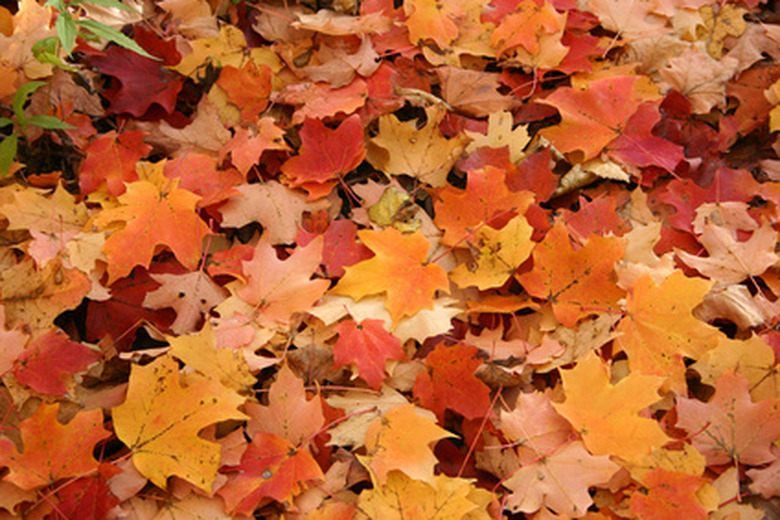Hardwood Tree Leaf Identification
So you have a leaf in hand and you want to know what it is. Chances are, the leaf belongs to a hardwood tree, also known as deciduous trees, which belong to the same group as flowering plants. Fortunately, when identifying a hardwood tree, the leaves provide some of the best clues that will help you to reach a reliable conclusion.
Features
Hardwood trees are distinguished from evergreen trees because they lose their leaves when the weather grows cold, a mechanism that protects the trees from dehydration when groundwater freezes during the winter. The shape, arrangement, complexity, texture and pattern of leaf veins will all help you to identify your hardwood tree.
Leaf Shape and Arrangement
According to the North Dakota State University Extension, deciduous trees are arranged into four groups based on the arrangement of their leaves on the branch and the basic shape of the leaves. If you have only a single leaf, you might not be able to tell much about leaf arrangement. Opposite leaves grow in pairs directly across each other on the branch, while alternate leaves grow singly, alternating sides of the branch. The most basic classification of leaf shape is simple or compound. Simple leaves occur singly, and compound leaves occur in groups. If you have trouble knowing what constitutes a group, the extension recommends looking at the base of the leaf. If there's a bud, it is a simple leaf. If there is no bud, it is compound.
- So you have a leaf in hand and you want to know what it is.
- According to the North Dakota State University Extension, deciduous trees are arranged into four groups based on the arrangement of their leaves on the branch and the basic shape of the leaves.
Leaf Margins
The shape of the leaf margins provides another valuable detail to aid you in identification. The margins of smooth leaves lack ragged or curved edges. Finely toothed and doubly toothed edges have mild and sharp jagged edges, respectively. Lobed leaves have multiple rounded projections.
Other Traits
Also note the pattern formed by the leaf veins. Pinnate veins emerge from multiple points from the rib that extends down the middle of the leaf. Palmate veins extend from a single point, resembling the spread fingers of a hand. Observe the texture and color of the leaf and whether it is covered in fine hairs or smooth. Finally, note if the leaf has a particular aroma. All of these details can help you narrow down identification.
- The shape of the leaf margins provides another valuable detail to aid you in identification.
Considerations
Once you've narrowed down your leaf to one or a few species, it's time to consider other factors that might help you to fine-tune the identification even further. Look up the possible species in a field guide and confirm that all of the information matches with what you know about your tree. For example, if you found a long, frond-like leaf in New England, it more likely belongs to a willow tree, not a palm tree. If you know any additional information about the tree the leaf came from, such as the color or texture of the bark or the tree's habitat, confirm that this information matches as well.
